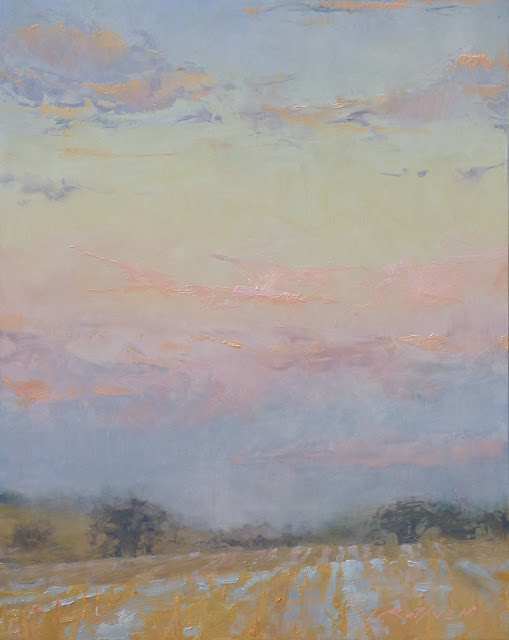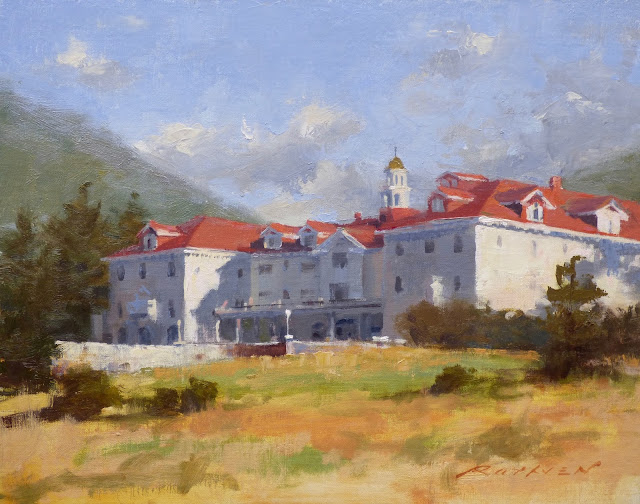Here's a quick tutorial showing how you can make a wet panel carrier from basic materials.
Materials I used to make this box which fits (4) 8"x10" painting panels :
1.5"x3/4" pine or poplar or oak board that's 28" long at a minimum.
2pcs 1/8" MDF board about 9"x12" (you will need to cut it down to size later)
Wood glue
18-20 Small brad type nails.
Hammer, table saw.
Step #1 Cut the channels / slots
Using a table saw, cut channels in the 1.5"x3/4" length of wood. The channels should be about 1/8" deep and about one and a half widths of the saw blade. This allows enough room for the painting panels to slide freely in these channels / slots. Try to space four slots equally across the long face of the wood. You want enough gap between slots so your wet paintings won't touch.
Step #2 Cut the slotted 1.5"x3/4" into the two side lengths and one length for the bottom:
By cutting the channels first, while the board is in one length and then chopping that board into the sides and bottom, you ensure the slots align perfectly. You'll understand this when you assemble it!
Step #3 Layout the sides and bottom pieces with the channels and attach the 1/8" MDF panels for sides.
Now remember, if you want a carrier that holds 8x10" panels, have a few on hand and make all your measurements and cuts so the panels will fit perfectly into the channels.
I used wood glue and small nails (I actually used small brads since I have a nail gun) to attach the MDF to the 1.5" wood with the channels. You can put a couple of 8x10 panels in the carrier and use clamps to hold the unit together while glueing up to be sure the unit is square and will hold your panels.
Step #4 Cut and fit the lid.
The lid is another piece of the 1.5" wide wood, but only 1/4" thick. It has no grooves since the painting panels will slide down into the box and be flush with the bottom-side of the lid. It is cut to fit exactly into the top recess in the box. I also sanded the bottom edge where the lid pivots against the box...this inside edge needs to be rounded off so the lid can open and close easily without catching on the box.
To attach the lid, I drilled a hole through each sidee of the box, into the side edges of the lid (which I held in it's final, closed position, while drilling). I inserted a small nail into each of these holes as a hinge.
Step #5 Final sanding
Once the box is assembled I sand the outside edges of the closed box lightly so all edges are flush and slightly rounded to the box feels and looks nice.
Step #6 Stain and seal
Finally, I added a red stain to the sides and then applied polyurethane to all of the outside surfaces. You can omit the stain if you want but I do suggest sealing the wood with polyurethane to protect it.









